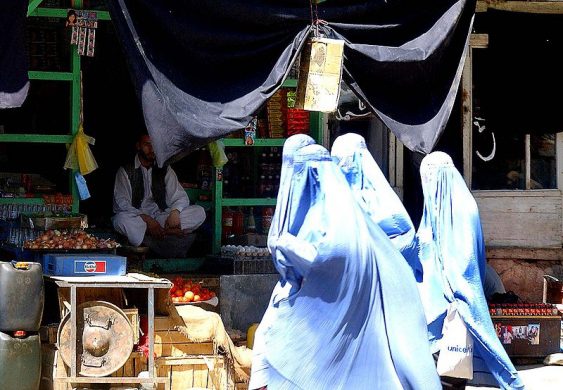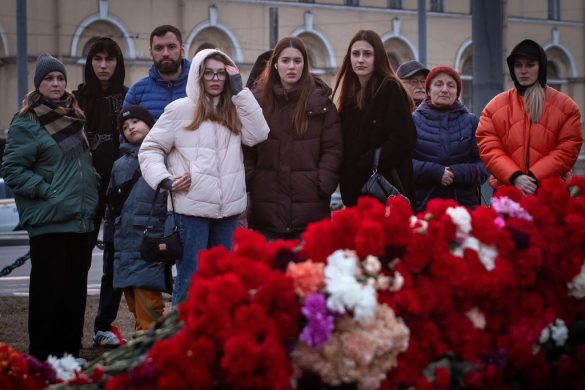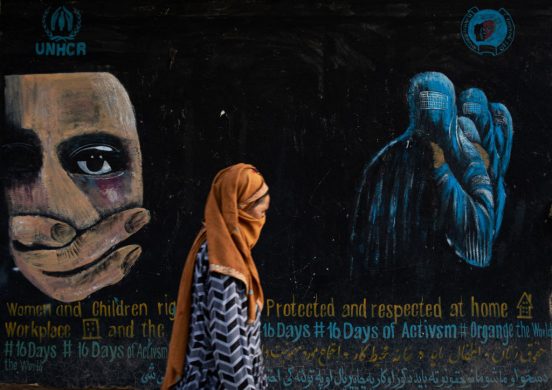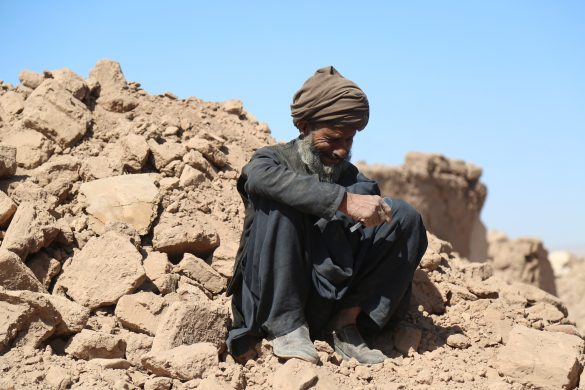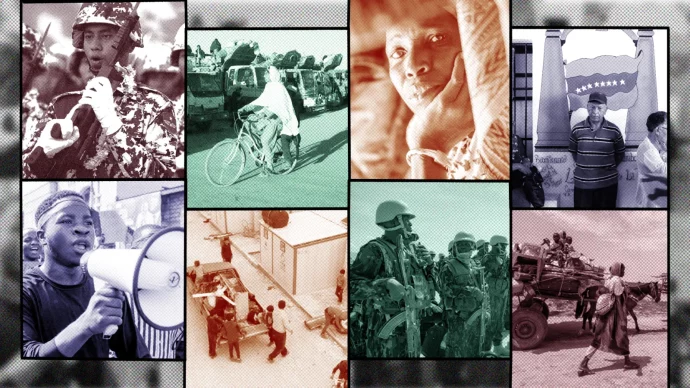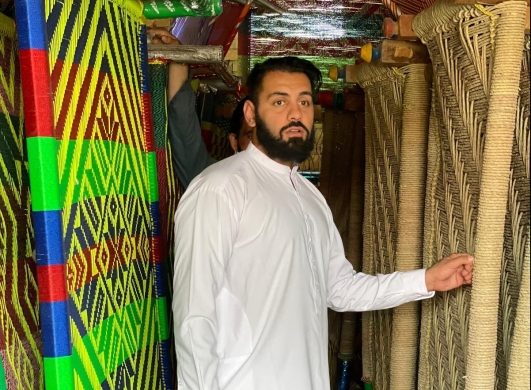Shopping wearing such an all-encompassing garment is not easy. Women have to raise their voices, trying to bargain with stallholders they can barely see from behind their veils. Sometimes they ask shopkeepers if they can draw their goods under the burka, so as to inspect them properly.
The sellers most often refuse.
But many women say that they have no choice but to wear the clumsy, all-enveloping garment.
Feelings of isolation
The image of a woman wearing the voluminous covering came to symbolise Afghanistan under the Taleban. Although women have taken a far greater role in public life since their regime fell in 2001, the burka is still a common sight in many parts of the country.
Many argue that the burka is not an Islamic requirement of hijab, or modest dress. They also insist that it has no real root in Afghan culture, where women traditionally covered their hair and shoulders with a large shawl.
Such clothing also served as a form of gender discrimination, she added.
Forced to wear it
She agreed that imposing the burka was an expression of gender violence.
The robes cover a woman completely and are usually sky-blue, although white, brown and other shades are occasionally seen. Most are made of cheap synthetic material, with a mesh face-covering that allows only a limited view of the outside world.
Although the burka is most closely associated with Afghanistan, historians say it is a relatively recent arrival to the country.
Nasir Naiz, a cultural expert, said that until the Taleban era, the burka was only one design among many ways women dressed outside the privacy of their own homes.
Naiz said that there was no definitive information on when and how the burka arrived in the region, but that it had first appeared in Afghanistan around 100 years ago as an import from India where it had been in turn introduced by Arab invaders.
King Amanullah, who ruled from 1919 to 1929, shocked the nation by allowing his wife Queen Soraya to remove her veil at a public function. During the 1978 to 1979 Russian occupation, many women and girls in the larger cities discarded the headscarf altogether.
Some women say that wearing the burka gives them a sense of security.
Zia Gul, 41, a resident of the vilage of Imam Shash Nur in Engeel district, said that the burka was not only an Islamic requirement but served as a form of protection.
However Mohammad Ihsan, who has run a shop selling burkas for the last 30 years, said that in his experience women did not wear the restrictive garment of their own volition.
The 62-year-old recalled one particular incident in which a young woman was threatened with violence in his shop.
Traditions still linger
Religious scholars say that the proper definition of modest dress has been the subject of debate by scholars for centuries.
This meant that there was no textual basis for the burka to be the ultimate expression of hijab, explained religious scholar Maulawi Sayed Husain Husaini.
Husaini explained that no specific model of hijab was mentioned in the hadith, the sayings of the prophet, or other Islamic texts. Therefore it was wrong to insist that the burka was the version of hijab mandated by Islam.
Officials say they are trying to spread awareness of what Islamic teaching really says about modest dress for women, and how alien the burka is to Afghan tradition. Conservative attitudes mean this is difficult, especially in more remote areas.
No women outside the house
Not all men support the imposition of such a restrictive garment.
But others, especially in rural areas, remain adamant that the burka was the only acceptable covering for female members of their family.
Mula Mohammad, a resident of the village of Bala Bolook in the Guzara district of Herat, was against the idea of women even leaving their homes.

